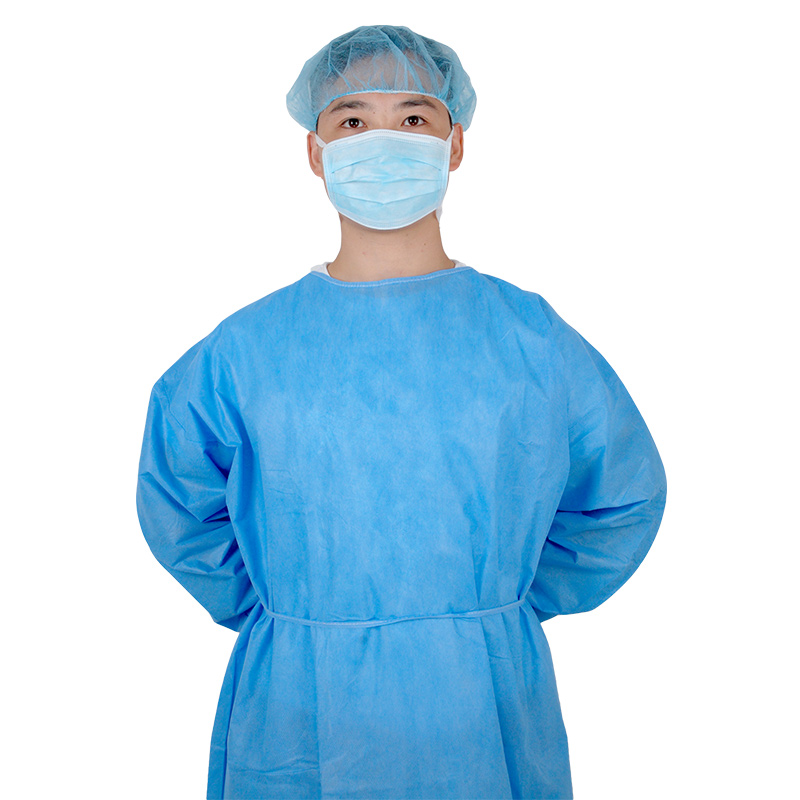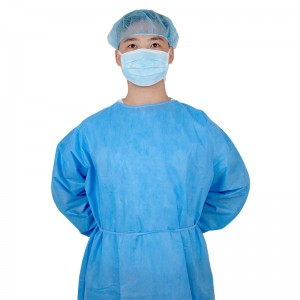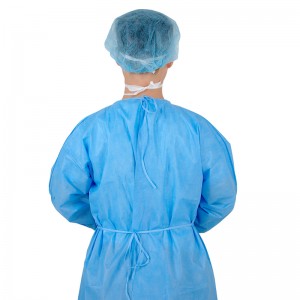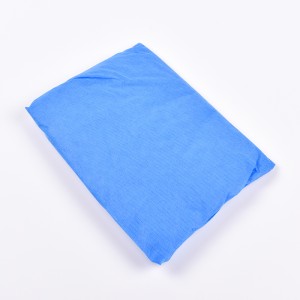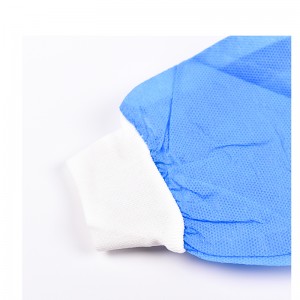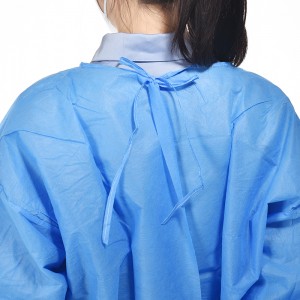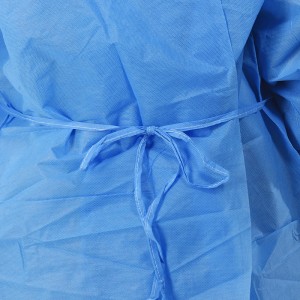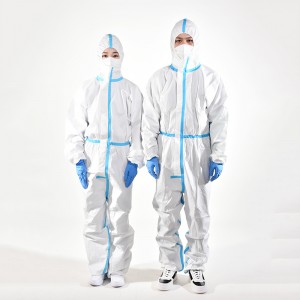Features
● Soft feel;
● Good filtering effect;
● Strong acid and alkali resistance.
● Good air permeability
● Excellent protective performance
● High hydrostatic pressure resistance
● Anti-alcohol, anti-blood, anti-oil, anti-static and antibacterial
Serviceable Range
It is worn by operators to reduce the spread of infection sources to patients' surgical wounds to prevent postoperative wound infection; Having a surgical gown that prevents liquid from penetrating can also reduce the risk of infection sources carried in blood or body fluids from spreading to surgical personnel.
Application
● Surgical operation, patient treatment;
● Epidemic prevention inspection in public places;
● Disinfection in virus-contaminated areas;
● Military, medical, chemical, environmental protection, transportation, epidemic prevention and other fields.
Classification of surgical gown
1. Cotton surgical gown. Surgical gowns are the most widely used and most dependent in medical institutions, although they have good air permeability, but the barrier protection function is poor. Cotton material is easy to fall off, so that the hospital's annual maintenance cost of ventilation equipment will also have a great burden.
2. High density polyester fabric. This kind of fabric is mainly based on polyester fiber, and conductive substances are embedded on the surface of the fabric, so that the fabric has a certain antistatic effect, so that the wearer's comfort is also improved. This kind of fabric has the advantages of hydrophobicity, not easy to produce cotton flocculation and high reuse rate. This kind of fabric has good antibacterial effect.
3. PE (polyethylene), TPU (thermoplastic polyurethane elastic rubber), PTFE (teflon) multilayer laminate membrane composite surgical gown. The surgical gown has excellent protective performance and comfortable air permeability, which can effectively block the penetration of blood, bacteria and even viruses. But in the domestic popularity is not very wide.
4. (PP) polypropylene spunbond cloth. Compared with the traditional cotton surgical gown, this material can be used as the material of disposable surgical gown because of its low price, certain antibacterial and antistatic advantages, but the resistance to hydrostatic pressure of this material is relatively low, and the barrier effect on the virus is also relatively poor, so it can only be used as a sterile surgical gown.
5. Polyester fiber and wood pulp composite of water cloth. It is generally only used as material for disposable surgical gowns.
6. Polypropylene spunbond, melt spray and spinning. Adhesive composite non-woven fabric (SMS or SMMS) : as a high-quality product of new composite materials, the material has high hydrostatic resistance after three anti-alcohol, anti-blood, anti-oil, anti-static, anti-bacterial and other treatments. SMS nonwovens are widely used at home and abroad to make high-grade surgical gowns.
Parameters
|
Color |
Material |
Gram Weight |
Package |
Size |
|
Blue/White/Green etc. |
SMS |
30-70GSM |
1pcs/bag,50bags/ctn |
S,M,L--XXXL |
|
Blue/White/Green etc. |
SMMS |
30-70GSM |
1pcs/bag,50bags/ctn |
S,M,L--XXXL |
|
Blue/White/Green etc. |
SMMMS |
30-70GSM |
1pcs/bag,50bags/ctn |
S,M,L--XXXL |
|
Blue/White/Green etc. |
Spunlace Nonwoven |
30-70GSM |
1pcs/bag,50bags/ctn |
S,M,L--XXXL |
Details
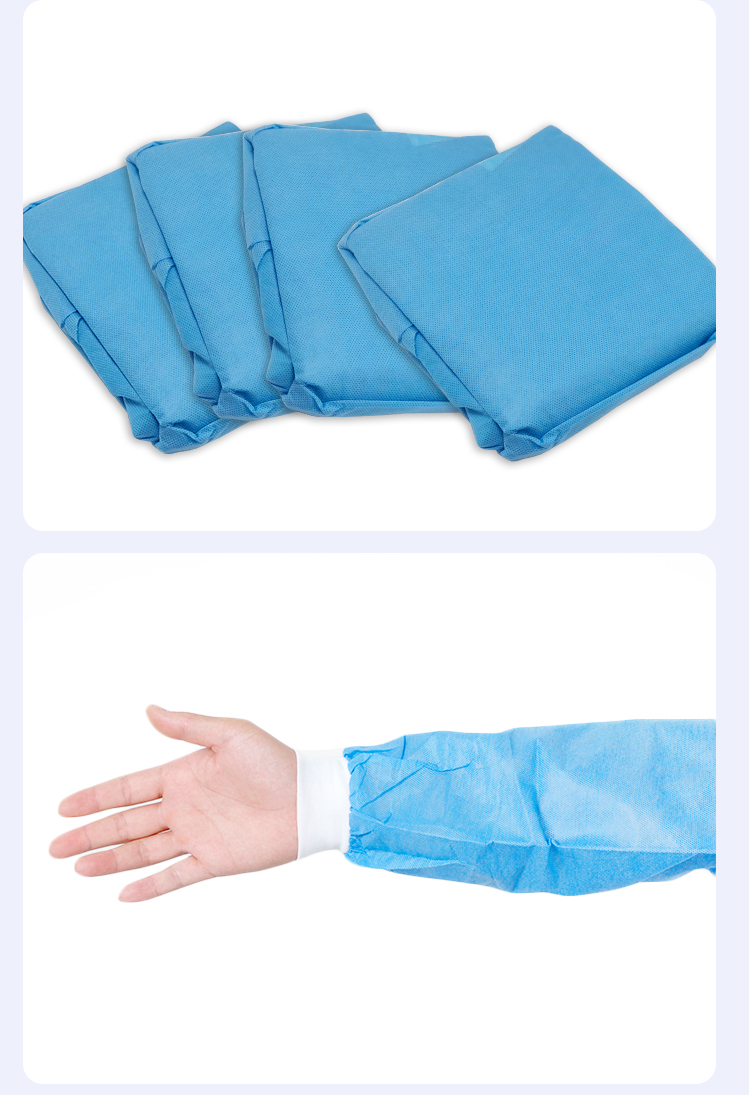
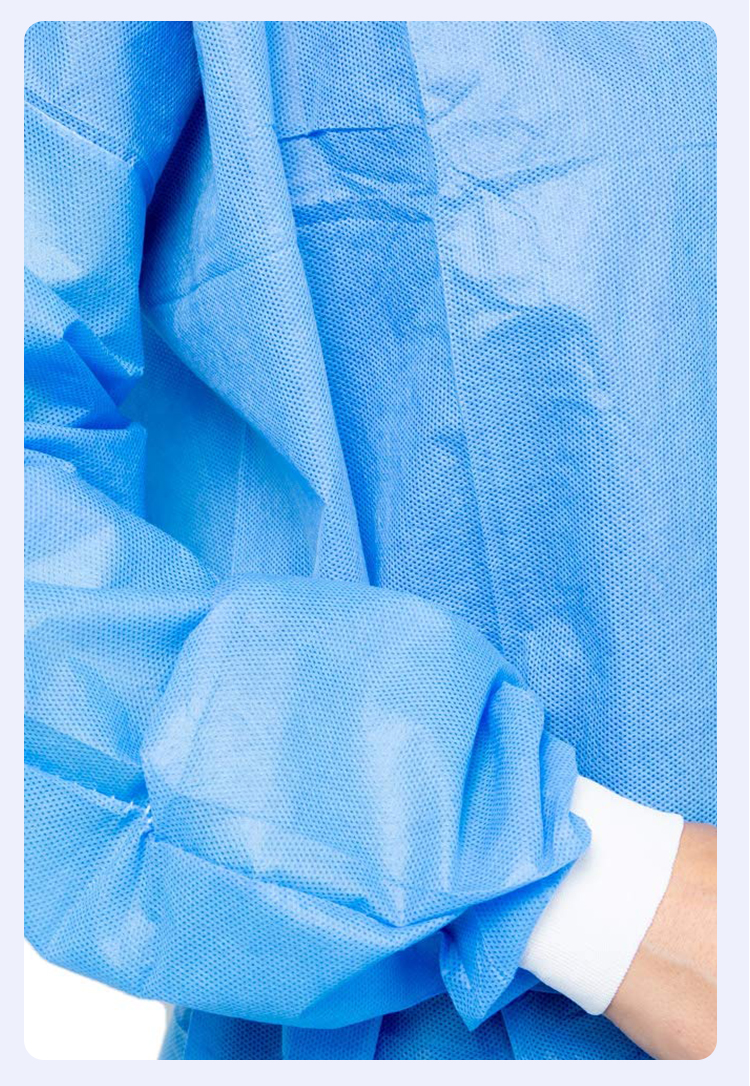
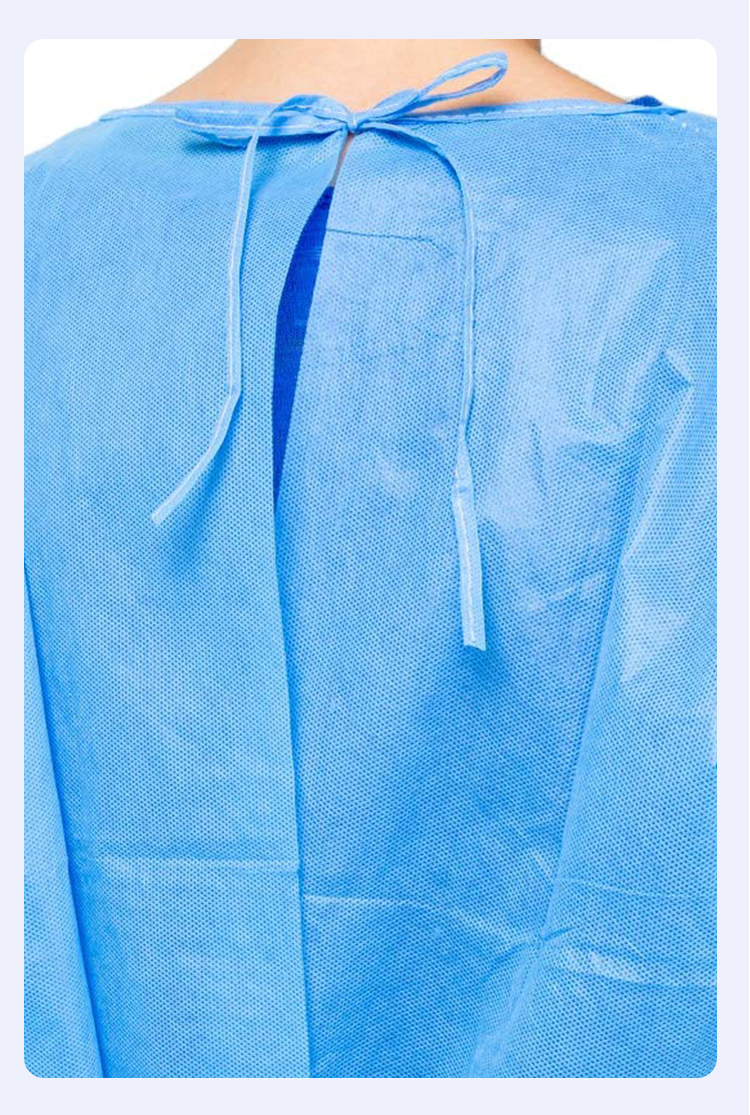
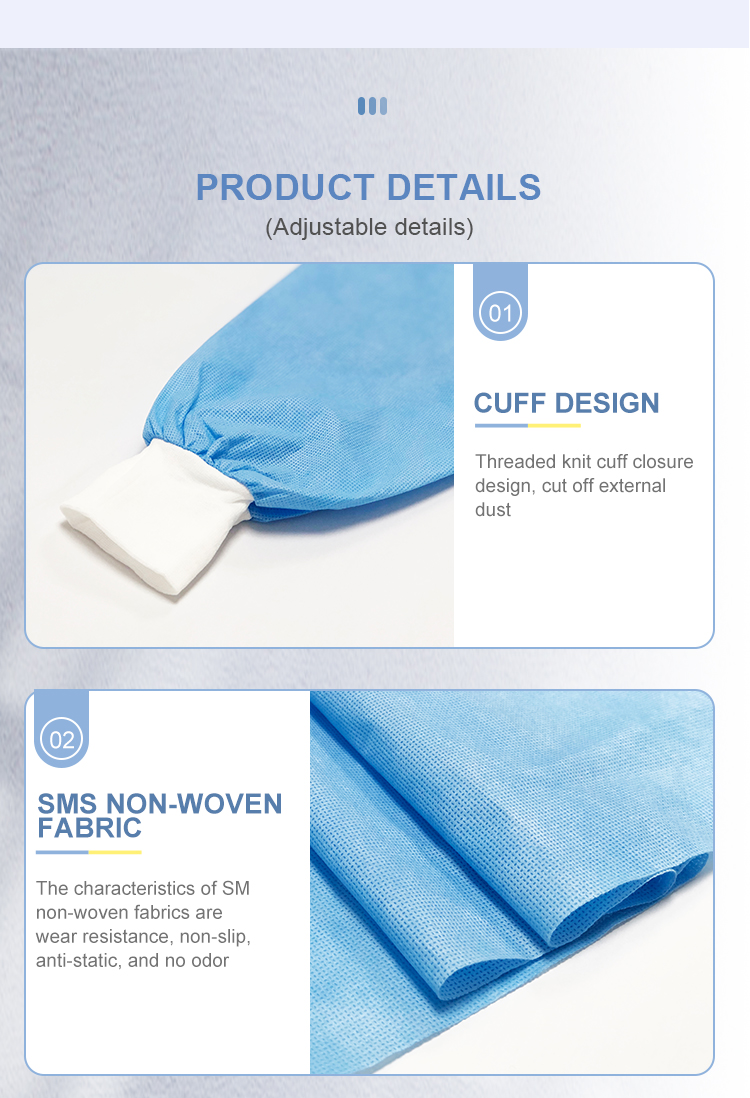
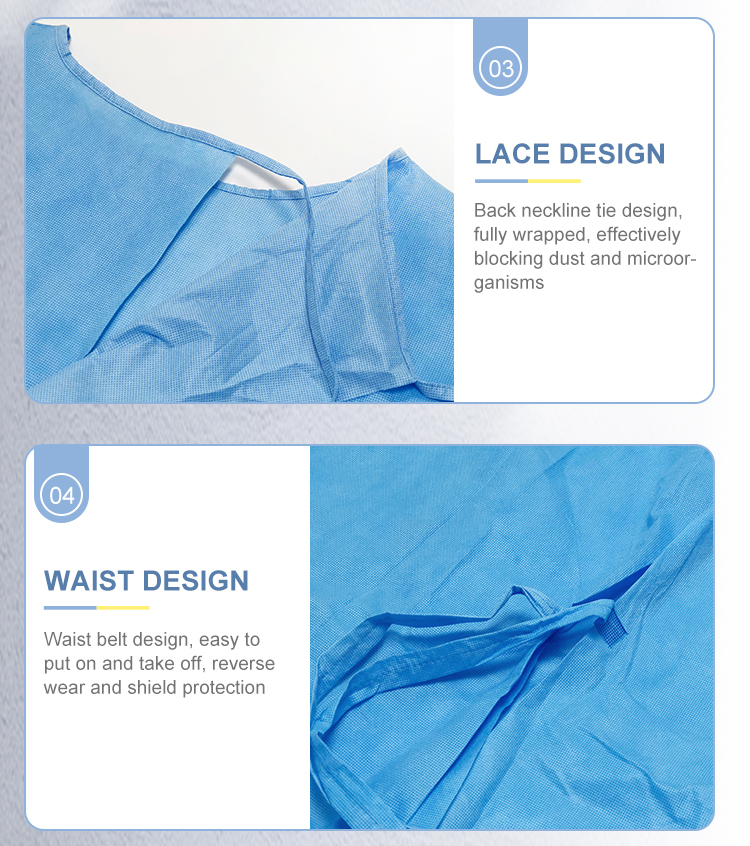
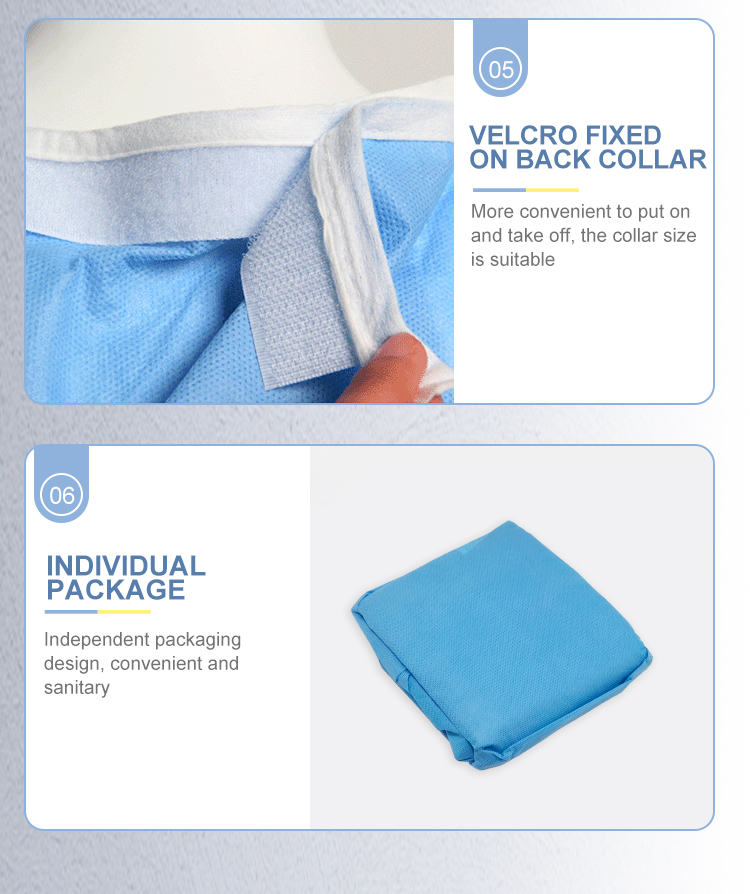
FAQ
1. What are your prices?
Our prices are subject to change depending on supply and other market factors. We will send you an updated price list after your company contact
us for further information.
2.Can you supply the relevant documentation?
Yes, we can provide most documentation including Certificates of Analysis / Conformance; Insurance; Origin, and other export documents where required.
Leave Your Message:
-
Disposable Protective Gowns,PP/SMS/SF Breathab...
-
Yellow PP+PE Breathable Membrane Disposable Pro...
-
Small Size Disposable Patient Gown (YG-BP-06-01)
-
110cmX135cm Small Size Disposable Surgical Gown...
-
Extra Large Size PP / SMS Disposable Patient Go...
-
Factory Price Cat.III Tyvek Type 5B/6B Disposab...
